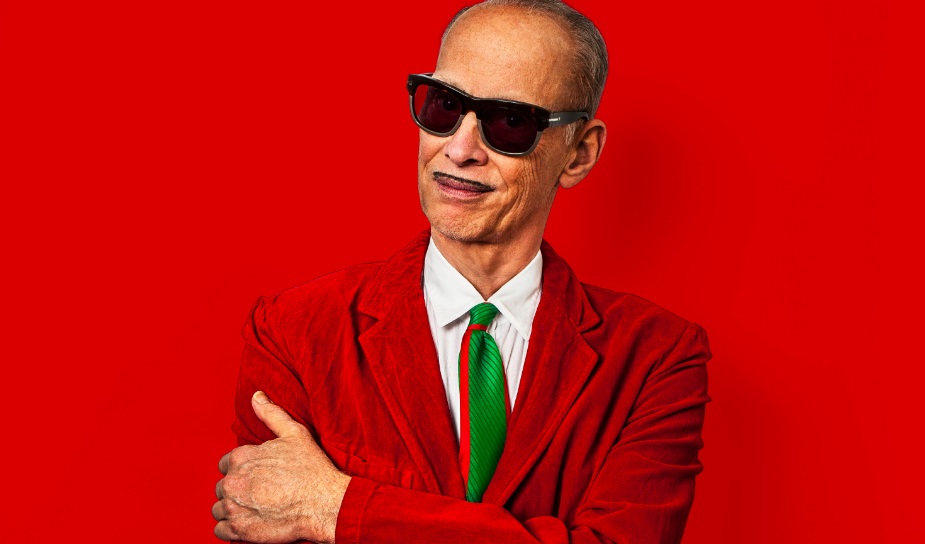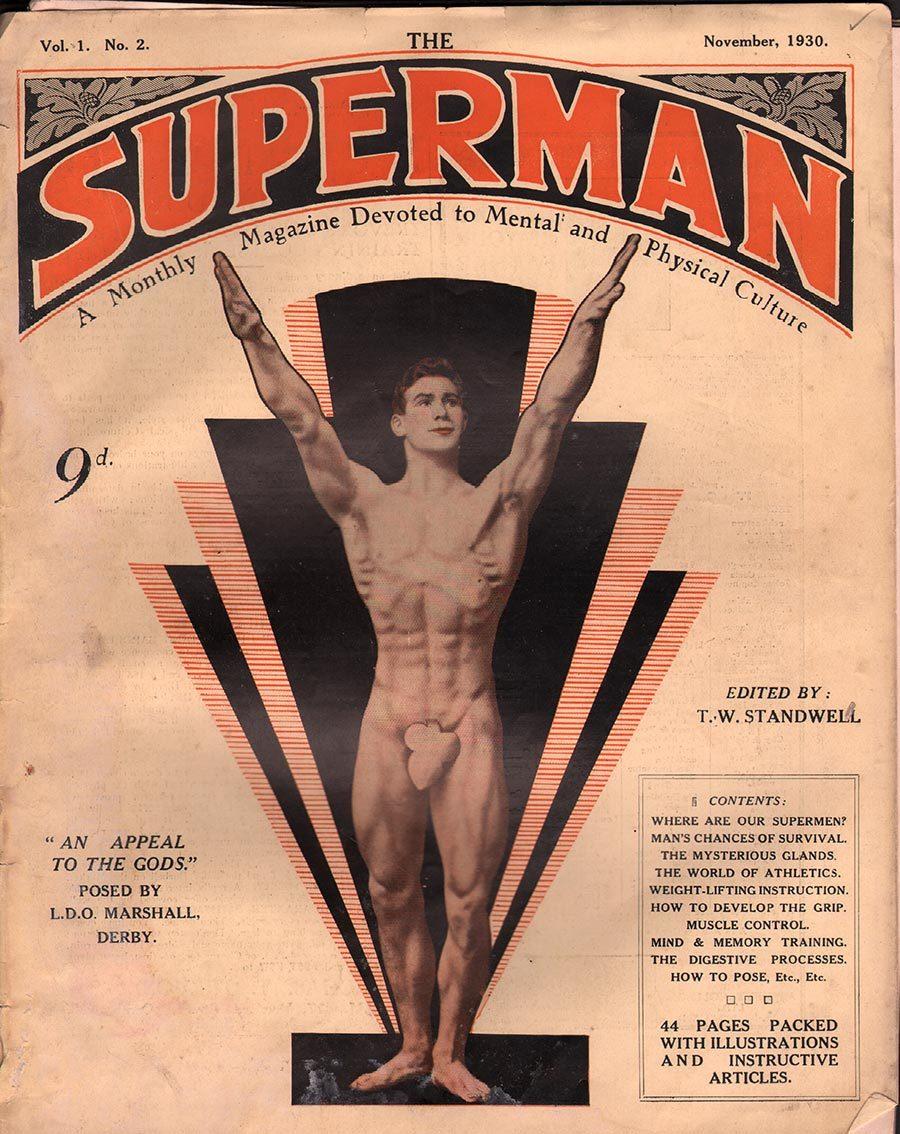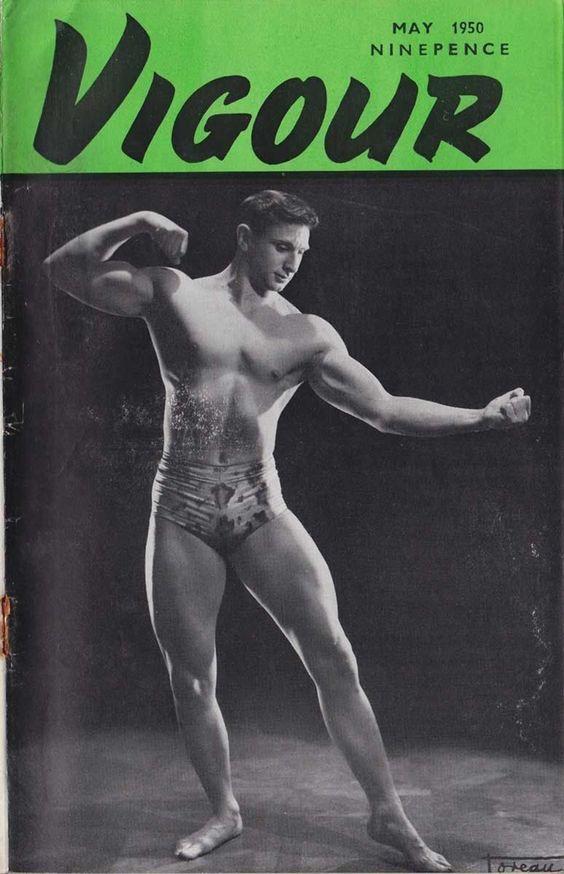Babes in Dreamland: Masculinity in John Waters Films, Part II
Author's note: This is part II of a two-part series on the portrayal of masculinity in selected films of director John Waters.
5 min read
Bob Mizer Foundation : Apr 23, 2018 3:00:00 PM

Author's note: This is the first in a two-part series on the portrayal of masculinity in the films of director John Waters. Part I covers "Pink Flamingos," "Female Trouble," and "Desperate Living."
The man crowned "the Pope of Trash" and "the Sultan of Sleaze" counts among his artistic inspirations none other than Bob Mizer himself.
Certainly, both men have redefined masculinity in their respective works, and Waters himself collaborated with the Bob Mizer Foundation and TASCHEN's Dian Hanson on a 2010 gallery exhibition of the work of Old Reliable's David Hurles.
"It takes a special kind of person to be able to appreciate both Mizer's photography and Waters' films," says Den Bell, president and CEO of the Foundation. "The campiness inherent in their works is undeniable, and it's part of why they're so widely loved today. And John Waters has always been a huge supporter of the work we do here. It's an honor to be recognized by a filmmaker whose movies have amassed such a sizable cult following."
Mizer's still photos and films displayed traditional masculinity, and Waters' more recent films paid homage to some of those traditional portrayals -- especially the long-haired flower child and the 1950s-style hoodlum out looking for trouble and a good time.
"Every one of Waters' films offers characters that reflect both traditional contemporary attitudes toward masculinity," Bell says. "Mizer's influence is easy to see here, and we're proud to be a part of John Waters' vision."


Perhaps John Waters' most memorable film, "Pink Flamingos" follows the exploits of trailer park maven Babs Johnson (played by drag queen Divine, a childhood friend to Waters) as she vies for title of "The Filthiest Person in the World." She finds herself in competition with a lustful, equally filthy couple, the Marbles. "Pink Flamingos" is easily Waters' most visually offensive film -- Raymond (David Lochary) and Connie Marble (Mink Stole) sell heroin to schoolchildren. They kidnap and impregnate hitchhikers. Babs herself hosts a lavish party whose center attraction is a man puckering and unpuckering his anus to make it "sing." In the film's most famous moment, Divine greedily eats a fresh dog turd (yes, it's real -- a dog defecates onscreen and Divine chews up the results, with nary a camera cutaway). The cast features a colorful group of misfits known to Waters fans as "Dreamlanders."
One of Waters' Dreamlanders, Danny Mills, appeared only in "Pink Flamingos" and never acted again, fading instead into obscurity before his Jan. 21, 2017, death in Baltimore. Mills plays Crackers, Babs' adult son. Mills' physical appearance in "Pink Flamingos" does little to set him apart from any of the stereotypical hippies of the late 1960s -- thin and wiry, he sports long hair, a beard and a mustache.
Mills' body is on full display in one of the film's most shocking moments -- a sex scene between Crackers, his girlfriend, and a third party that's just a little fowl (yes, you read that correctly. If you've seen "Pink Flamingos," you know what we mean). Crackers and Babs get amorous, too, after breaking into the Marbles' home and licking every item in sight.
Throughout the film, one can't help but notice how Mills bears a striking resemblance to some of Mizer's grungier models from the late 1970s and early 1980s, right down to the chipped teeth. In fact, with some muscle tone and a snip of excess hair, he might bear a passing resemblance to AMG model Tico Patterson.
"The hippie look signified rebellion, it signified a new time for the country," Bell explains. "'Pink Flamingos' is all about tearing down all societal norms and embracing the bizarre, the trashy, the filthy."


The male hippie look makes a comeback in "Female Trouble." Divine embraces both her feminine and her masculine side in this story of teenage runaway Dawn Davenport, who ends up impregnated by a man who sexually assaults her (in a strange twist, the attacker is played by Divine out of drag and dressed as a macho trucker donning a wife-beater shirt, dirty jeans, boots, and a ball cap). Dawn gives birth to a daughter whom she lovingly names 'Taffy,' marries a male hairdresser named Gator, and meets a couple who get her into modeling -- albeit with a violent end.
Though his part in "Female Trouble" is small, Dawn's husband Gator (Michael Potter, another one-and-done Dreamlander) is a fascinating character. Like Crackers, he possesses a lean, smooth body and long, straight hair. Gator works as a hairdresser -- a vocation filled predominantly with females -- yet he wants to eventually work in the auto industry. Gator lives with his Aunt Ida (the incomparable Edith Massey, hamming it up in a nightmarish black dominatrix costume), who tries to convince her nephew to live as a homosexual. "Oh, how I wish you were nelly," she coos. "The world of the heterosexual is a sick and boring life!"
When Aunt Ida tries to set Gator up with one of her friends, a flamboyantly gay man whom Gator threatens to assault (the effeminate Ernie dismisses Gator as nothing more than "trade"), Gator's homophobia is on full display. Ironic considering his job -- one would think Gator would, at respond lukewarmly to Ernie's advances. Despite his job as a hairdresser, Gator remains a man's man.
Besides a sexual proposal that Gator makes to his own, now-teenage stepdaughter, incest is once again referenced by a male character toward the end of the film, when Dawn's former attacker, Earl (again, Divine out of drag), seduces Taffy himself.
By the end of "Female Trouble," we can see that both men -- one a cliche of blue-collar masculinity and the other a virulent homophobe despite his feminine looks -- have only been used as props throughout Dawn's exploits. Ending up in prison after a killing rampage during one of her model appearances, Dawn finds a female lover in prison and remains defiant until the bitter end.


John Waters' first major film without Divine, "Desperate Living" feels more like a twisted feminist anthem than anything else. A neurotic suburbanite named Peggy (Mink Stole) and her live-in maid Grizelda (Jean Hill) escape town after the murder of Peggy's husband and end up in a sleazy shantytown, aptly named Mortville. There, she encounters a bevy of lustful, perverted, often-wicked social outcasts.
Chief among them is Mole (Susan Lowe), an ultra-butch lesbian who wants a sex change in order to sexually please her lover (Liz Renay). Those watching "Desperate Living" for the first time will do a double-take when introduced to Lowe's character, who looks and sounds like a twink playing dress-up in his father's old motorcycle gear. Mole, a former wrestler, wears her platinum blonde hair in a swept-back pompadour reminiscent of many of AMG's models from the 1940s-60s. Her face in a perpetual scowl, she wear a black leather biker jacket throughout much of the movie, another homage to the teen rebel films of the 1950s. Liz Renay, meanwhile, is Mole's feminine foil, a busty, older blonde who looks, squeals and purrs like a dime-store Marilyn Monroe to Mole's James Dean.
The main antagonist in "Desperate Living" is Mortville's evil Queen Carlotta (Edith Massey again), who is never seen without her scantily clad male bodyguards who apparently also double as royal go-go boys. Again, in this film, men are mere sexualized props (though always masculine). Dressed in black leather jackets, mesh shirts that reveal their chests, and matching biker caps, these goons look like they just leaped off the pages of a Tom of Finland publication. The queen's goons not only kill and maim at her command -- they must be constantly available to cater to her sexual needs, or even to gyrate seductively when commanded to do so.
Though John Waters' films from the 1970s presented many presentations of masculinity, his later films -- those of the 1980s and '90s -- mirrored Mizer's gravitation toward more hoodlums and bad boys. More on those bastions of masculinity next week.

Author's note: This is part II of a two-part series on the portrayal of masculinity in selected films of director John Waters.

Author’s note: This is the third in a three-part series on the history of physique culture in Great Britain. Look for a separate profile of British...

Author’s note: This is the first in a three-part series on the history of physique culture in Great Britain. Look for part II on our blog on Tuesday,...

Author’s note: This is part two of a two-part series on the history of Champion Studio and its founder, Walter Kundzicz.